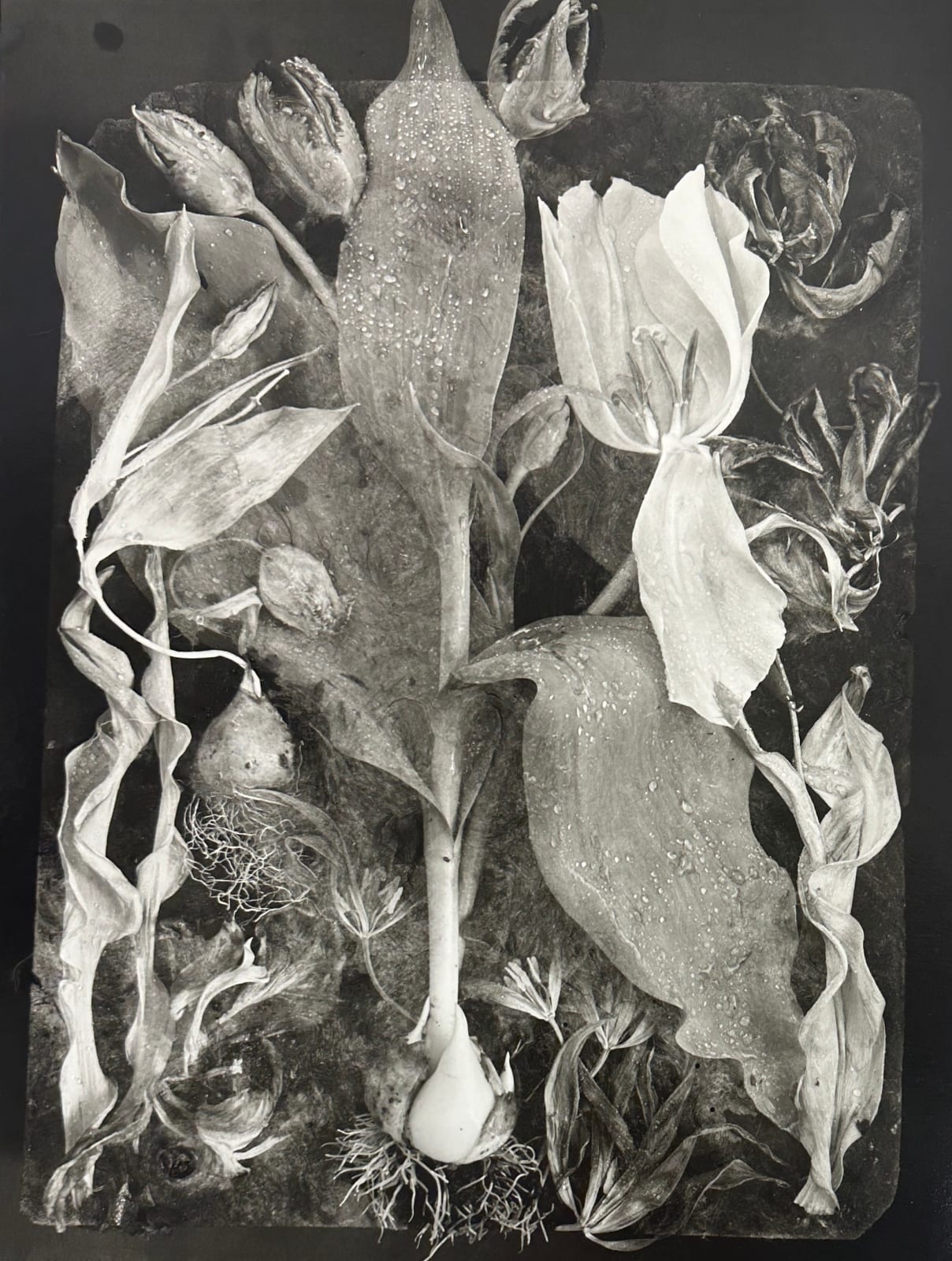John Blakemore
24 x 18 1/4 ins
John Blakemore writes that “The tulip work began during a period of crisis in my practice.
In attempting to define the parameters of a continuing, a possible practice I was writing and studying critical theory. The activity of writing was both pleasurable and frustrating, the blank page a tyranny which on occasion necessitated escape.
I decided to photograph as a parallel activity, an exploration of picture making to complement and inform my writing. The room in which I most often wrote was my kitchen, a confined space, a table, chairs, pictures on the wall, and on the table (a coincidence of season) a bowl of tulips, photographed, initially, because they were there, one element of the space I had decided to explore.
Gradually the tulip emerged as the dominant motif, as object of a continuing fascination, text and pretext for an activity of picture making.” (John Blakemore, Photographs 1955-2010, Dewi Lewis Publishing, 2011 (p145))
John Blakemore writes that “
The tulip is a flower of sensual and gestural elegance, of constant transformation, worthy of contemplation, of a prolonged and intensive scrutiny. The sustained working and reworking of a theme, a motif, facilitates an accumulation of reference through which the tulip can function both as object of celebration and as metaphor.” (John Blakemore, Photographs 1955-2010, **Dewi Lewis Publishing, 2011 (p152))
John Blakemore writes that “
I decided that I could use them to develop the ideas that had informed the Amergen image. The objects found in the garden evoking the past of the space, a species of archaeology, relating both to the present and the past of the garden, to more general social and historical discourses. Using plants from the garden evoked the cycle of the year, linked the images to the present of the garden.I then utilised the same working methods with my tulip photographs making the series Mutations and The Generations. I was intrigued by the thought that the reality of the images was constructed through the process of photographing, that no corresponding 'reality' existed." (John Blakemore, Photographs 1955-2010, **Dewi Lewis Publishing, 2010 (p.164))

